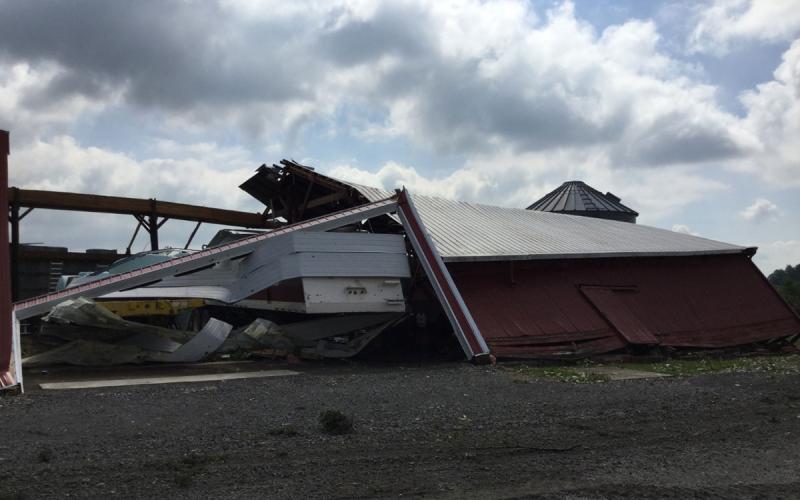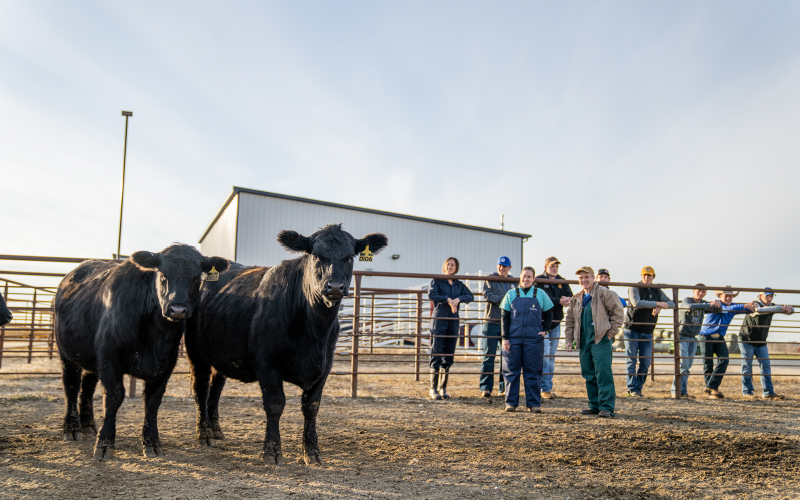
Of all the challenges faced by livestock owners and animal caretakers in the wake of damaging spring and summer storms, one potentially serious animal disease might not appear for days or weeks later: Tetanus.
Debris blown about by storms poses an injury threat to confined animals, as well as those in pastures and lots. These storms can also spook animals into running through fences and damaged buildings. A wide variety of animal injuries can result, ranging from minor scratches to debilitating injuries that require intensive treatment or euthanasia. When deep wounds result, Tetanus is a potential problem.
What causes Tetanus?
Tetanus is caused by a bacteria, Clostridium tetani, that only creates disease under very specific conditions. Farms can’t avoid this bacteria. It’s very common in soil and animal manure in spore forms that are very resistant to time and weather conditions.
Sitting out in the barnyard, these bacterial spores are harmless. It’s when they find their way into wounds that they cause disease. In damaged muscle and connective tissue that’s deep enough that oxygen can’t penetrate, the spores activate into rapidly reproducing bacteria that produce toxins. One of these toxins, called tetanospasmin, attaches to nerve endings in the area. The toxin blocks the nerve’s ability to release inhibitors that “switch off” muscle fiber contraction. As a result, muscles can’t stop contracting.
As more toxin is produced, it migrates up to involve more of the nervous system. Uncontrolled muscle contractions create clinical signs of stiffness, muscle tremors, a “sawhorse” stance and “flicking” of the third eyelid. Eventually the animal is beset with generalized tremors and an inability to stand; death or euthanasia is the outcome.
Because animal environments are commonly populated with Clostridium tetani, any wound can easily become contaminated. But not every wound provides the right conditions for Tetanus. Deep puncture wounds that introduce the bacteria into damaged, oxygen-poor body tissue are most often associated with Tetanus. The time from the wound occurrence to the onset of disease can vary from several days to several weeks, but is typically 10-14 days.
Additionally, animal species differ in how vulnerable they are to Tetanus infections. Horses are by far the mos- susceptible species, followed by cattle, sheep and pigs.
How do you treat and prevent it?
Tetanus is a preventable disease, with vaccines widely available for use in livestock species. Tetanus vaccine is considered a “core” vaccine for all horses, meaning that all horses should have annual Tetanus vaccinations. Routine Tetanus vaccination is less commonly recommended for cattle and older sheep, and generally focuses on calves and lambs being band castrated.
Once a wound occurs, the potential for Tetanus to develop can be dramatically reduced by prompt intervention. Following a storm, animal caretakers should closely examine their animals, as puncture wounds might not be obvious externally. Administering Tetanus antitoxin, proper wound care, and antibiotic treatment can reduce the chance that Clostridium tetani infections and their subsequent problems will occur. Because horses are highly susceptible, they should be administered antitoxin and have their Tetanus vaccination boostered when any kind of wound, however minor, is detected. While cattle and sheep are less susceptible, those interventions may be appropriate for them too.
Wound care methods vary according to their severity and location, so a veterinarian should be consulted about how to deal with them, as well as appropriate antibiotics to use. Once signs of Tetanus set in, progression can be very hard to stop, so prompt action is important.
In Summary
Animal care can be challenging following destructive storms, with Tetanus just one of the many considerations for animal caretakers. If you are one of these people, contact your local veterinarian for guidance; SDSU Extension can provide information as well.

